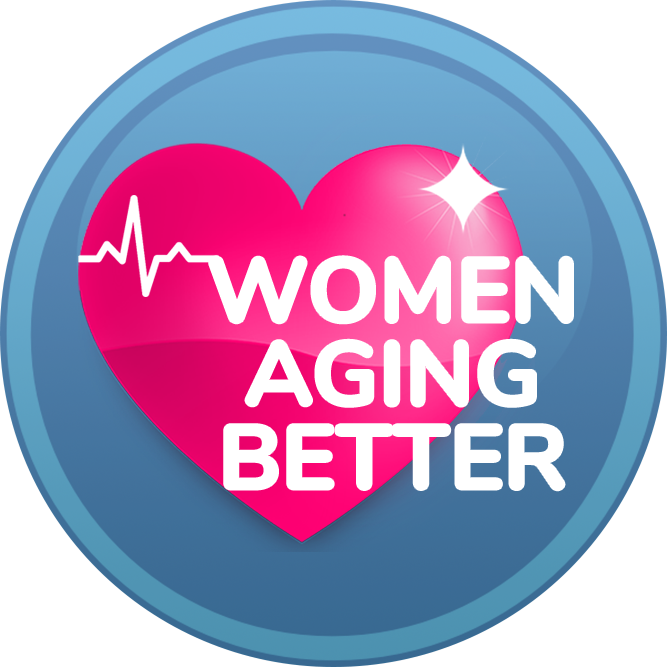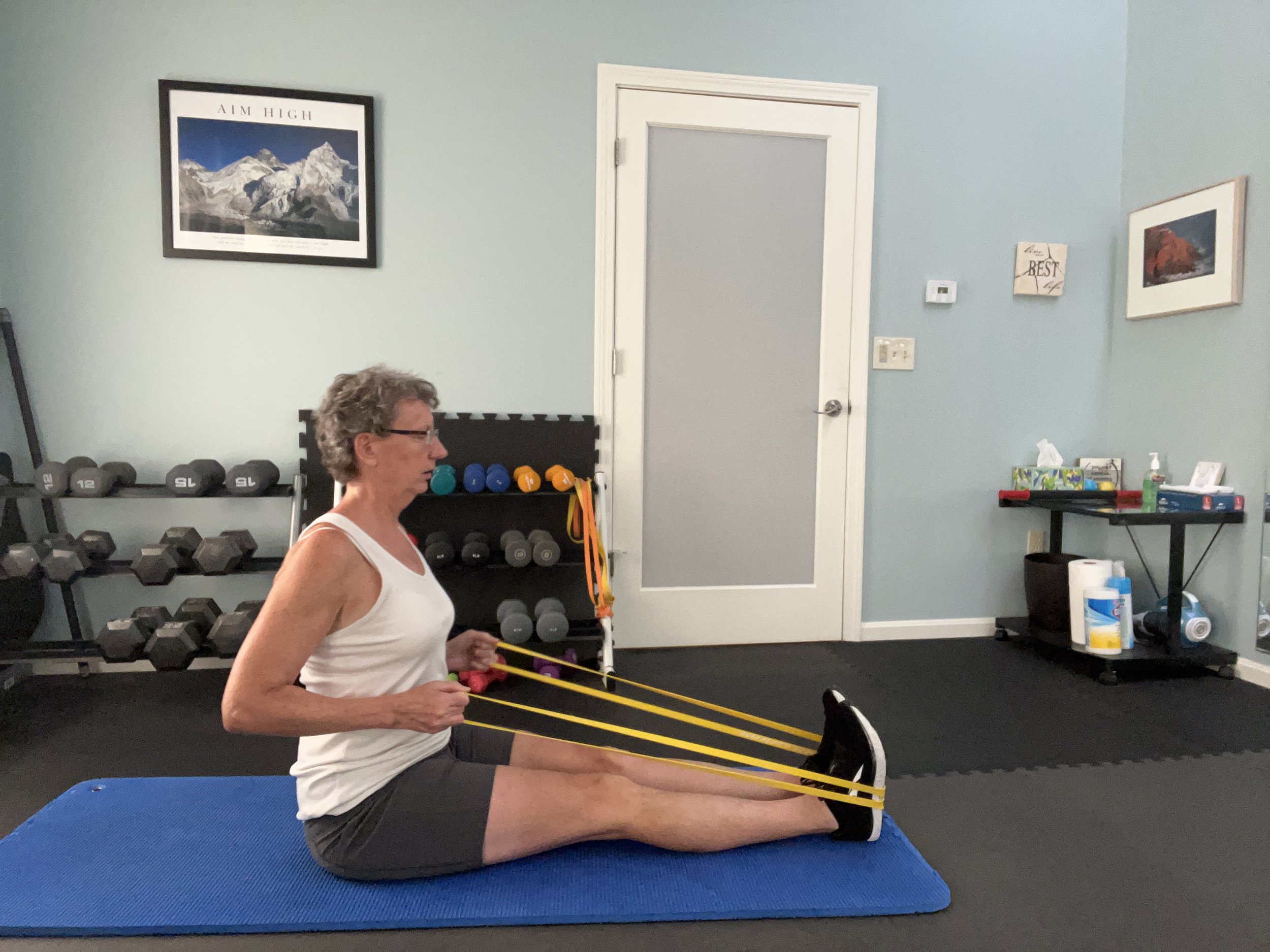Eliminate Back Fat with Seated Band Rows
As we age, there are certain parts of our bodies that seem to accumulate fat more than most of us would like. The fat around our bra (often referred to as our “back fat”) is one of these.
A row exercise is one of the easiest ways to build more muscle in this area. The more muscle we have, the more fat we burn!
Any row exercise (e.g., bent-over row, band or cable row, barbell row, etc), primarily targets the muscles of the back. Depending on how the row is done, the focus may be more on the upper or mid back muscles.
The main muscles I want you to focus on feeling during this band seated row are:
Latissimus dorsi (the Lats): The lats are your big back muscles that extend from your upper arm down to your lower back. They are the “pulling” muscles used in the rowing movement.
Rhomboids: Your rhomboids are between your shoulder blades and help you to pull your shoulder blades together.
Erector spinae: These muscles run along your spine and help maintain your upright posture while rowing.
Lower abdominal muscles: The abs below your belly button will also help to provide stability and postural support.
People like to lean back while they’re rowing because it makes the row easier, but you lose the benefits of the movement if you don’t stay upright.
It’s also super important to keep your neck in line with your spine, especially when your elbows are pulled all the way back. If you pull your head forward at this point, you engage your trapezius muscles (traps) and create tightness in your neck. NO THANK YOU!
Your biceps and two of the smaller rotator cuff muscles (infraspinatus and teres minor) also assist in the row movement but you should not feel them doing much of the work.
The biceps are simply helping to bend your arms and the rotator cuff muscles are providing stability as you pull your shoulder blades down and gently together during your row.
As with all exercises, there should be no pain in any of your joints. If you experience pain, stop immediately and consult with your doctor if the pain persists.
If you have any questions, please feel free to contact me.
If you found this video helpful, please share with others and subscribe to our YouTube Channel.

